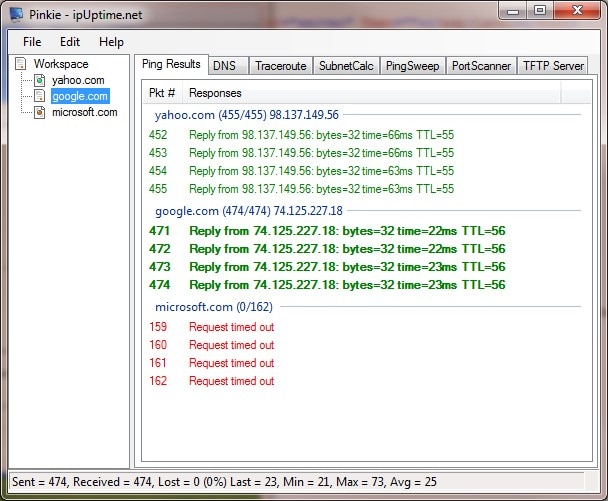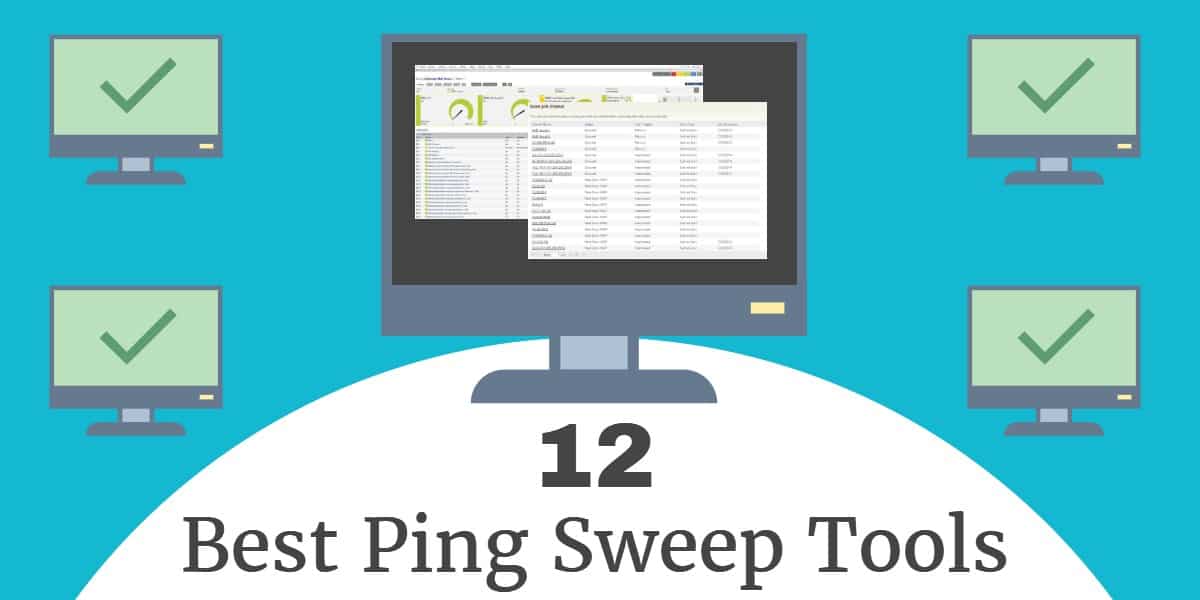Ping Sweep
Ping sweep is the process of pinging an entire range of network ip addresses to find out which ones are online or alive.
Nmap is an excellent tool to do this quickly and effectively.
Ping Sweep Tool Windows Free
Here is the command
The above command scanned all ip addresses from 192.168.1.1 to 192.168.1.255 and found out 3 ips online. The command was run on linux without root privileges.
Here is a brief explanation of the options used.

Angry IP Scanner is a ping sweep tool free download. software. It is a cross-platform and light-weighted tool where a user needs not to be bothered about any installation procedures. Like other ping sweep tools, it also pings each IP address to check its availability and collect further more data using API.
Note that nmap on linux will take more time if it does not have root privileges, since it is unable to create raw sockets without it. On windows however there are no such restrictions and nmap would be fast enough.
- Now lets start with some custom-built tools. Query the domain controller for Get-AdComputer with powershell is a possible solution, but there can be stale objects in AD. So using the Ping sweep technique is a pinging a pre-define subnet.
- Jul 15, 2021 Ping Sweep with Pinkie. Pinkie by IPUptime is another 100% free set of network troubleshooting tools bundled into an easy-to-use single pane of glass. Its management console bundles tools such as Ping, DNS, Traceroute, Ping Sweep, Subnet Calculator, Port Scanner, Bulk DNS, and TFTP.
- The Ping Sweep tool is just a single part of a network management suite of applications. This is the Engineer’s Toolset, and it has around 60 different tools for both keeping a close eye on networks and making sure that things run smoothly. Part of this collection of tools is the Ping Sweep utility. Using this tool is very easy.
- Ping Sweep is a technique used to identify if the hosts are alive in the networks using their IP addresses. The Ping Sweep method is used to ping many hosts at once. For example, if.
So if you are on ubuntu for example then use sudo to run nmap always. It will be much faster and show more information
When run with root privileges using 'sudo', nmap is able to scan faster.
The '-n' option will tell nmap to disable dns resolution, and this would speed up the scan further.
Faster Ping Sweep
Use the max-rtt-timeout to speed up the scan further.
Lets use a roundtrip timeout of 100ms.
Now the scan completed in less than 2 seconds and is quite good. When using lower roundtrip times, the accuracy may reduce, since some hosts may reply after the timeout and nmap won't be able to catch their replies.
However when pinging/scanning the local area network, hosts generally reply very fast and using a very small roundtrip timeout will give accurate results.
Try using a timeout of 5-10ms and nmap should show the results in less than a second.
Conclusion
To learn more about nmap check the manual page at:
https://linux.die.net/man/1/nmap
If you want to learn nmap further then check out this post:
Nmap Tutorial - How to Port Scan Remote Hosts
If you have any feedback or questions, let us know in the comments below.
Purpose of the Ping Scanner Tool
 The purpose of this tool is to locate active IPv4 devices connected to your local network or the internet. NEVER scan a computer you do not own or have the owner's permission to scan.
The purpose of this tool is to locate active IPv4 devices connected to your local network or the internet. NEVER scan a computer you do not own or have the owner's permission to scan.About the Ping Scanner Tool

The Ping Scanner Tool sends ICMP ping packets to every IP address in any range of IPv4 addresses you specify. It looks for ICMP responses from active devices. This tool operates across any range of IPv4 addresses whether on your subnet or across the internet. It can also ping a list of IPv4 addresses that you need to ping. That list need not be contiguous, it can be random.
Use Ping Scanner to locate active devices and gather other information about those computers. Use this utility in conjunction with the Port Scanner tool for a full accounting of each IP address. This tool is also known as NetScanner (tm) or Ping Sweep.
Related Tool Links
Capabilities and Features
- FAST! Typical time to ping every IP address in the local 254 IP address class C subnet is 3.2 seconds - a faster platform, network and set of targets will give you different results. (Test platform: 3Ghz 2 processor XEON dual core XP SP 3 system with 3.12GB ram and a 100mb wired ethernet interface. Test Conditions: local subnet, ping timeout 2 seconds, ping scan only, no IP/hostname resolution, ARP scan, subnet mask or SMB/CIFS/NetBIOS queries)
- Ping Scanner. Each target IP address is sent ICMP echo request ping packets. Responding device IPs are shown along with the response round-trip-time and the source IP address of the responding ICMP echo reply packet.
- Hostname resolution. Responding IPv4 addresses in the IP range or imported IP list can be optionally resolved to a hostname. This feature is dependent on DNS for accurate results. If you use the 'default System DNS' setting, SMB/CIFS/NetBIOS queries may also obtain the 'windows computer name'.
- Do Local ARP Scan. Following completion of a sweep, NetScanner can make additional ARP requests to responding IPs and add any new MAC address information into the results if MAC addresses were not recorded during the initial scan. This option is only useful for devices on the local subnet since ARP is not routed.
- Do SMB/NBNS Scan - getting a MAC address from SMB/CIFS/NetBIOS Name Server. SMB queries will obtain a MAC address if the target is a Microsoft Windows machine or Linux that responds to SMB queries. If the target responds, you can also get the Remote Machine Name table for viewing in the reports. This feature is optional and will work locally or across the internet if the target is not protected from SMB queries.
- Do Subnet Mask Scan. This option sends a ICMP address mask request and displays any responding information. Some target operating systems will respond, but most Windows versions after Win98 will not respond.
- Reports are available once the sweep is completed showing the scan statistics, report on an individual IP address or a combined results report. The reports are shown in your web browser (searchable, printable, can be saved to disk).
- Import Target IP List from File. This allows you to import a non-contiguous list of IP addresses, ie. random that can be any combination of local or internet IP addresses.
Try the NetScanTools Pro demo free for 30 days
DEMO Version End User License Agreement (EULA)How to Uninstall